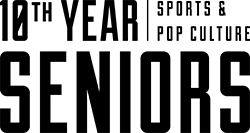by EDDIE THURSTON
To say it’s been a rough start for Buddy Hield and the New Orleans Pelicans would be an understatement. Simply put, it does not look good for the New Orleans Pelicans or Buddy Hield. Period. No need to sugar coat it. They are off to a winless start, 0-3. I must admit though, things are not as bad as they may seem. To the casual observer it looks horrendous. Buddy has missed his first eight three-point attempts, he hasn’t scored in double digits, and he has played less than 20 minutes in each of his regular season games thus far. Yes, as I said before, it does not look good but I want to show you why it really isn’t as bad as it seems. I will discuss things we should have expected, reasons why we shouldn’t be concerned about, and reasons why we should be gravely concerned about Buddy’s slow start.
What we should have expected
1. To lose against the Warriors & Spurs – These are two of the top franchises in the National Basketball Association. Both finished with over 65 wins last season, not to mention the Warriors finishing with the best record in NBA history, 73-9. Then there’s the addition of Kevin Durant to the Warriors, arguably one of the top three players in the league. These were simply two tough teams that the Pelicans were expected to lose to. Some may argue that the Spurs are not better now than they were last season which leads me to point number two…
2. The Pelicans played the Spurs on the end of a back-to-back – Not only did they play two of the top teams in the league they played them back-to- back, Friday October 28 and Saturday October 29. Ask any NBA player about the difficulty of playing those second of the back-to- back games and they will tell you that it’s one of the toughest games for them. The difficulty, among other things, has led the league to make adjustments – this 2016-2017 back-to- back games have been reduced for each team. Expecting the young Pelicans (10 th youngest team in the league with an average age of (26.2) to beat the Spurs after playing the Warriors the night before is expecting a lot, maybe even too much.
3. Injuries – The Pelicans are missing two of their top three players. In a league where “super teams” (teams with three superstars) are winning the championships it’s important to have your best players on the court to have a chance to win on any given night. With Jrue Holiday and Tyreke Evans both being out due to injuries the Pelicans are not as effective as they could be. Each of the Pelicans players will have to increase their normal production until those players return. Last season both players combined for a total of 32 points, 12.6 assists, and 8.2 rebounds per game.
Reasons why you should not be [too] concerned
1. The Emergence of Anthony Davis – In my most humble opinion, Anthony Davis (AD) is the 5 th best player in the NBA, only trailing Lebron James, Steph Curry, Kevin Durant, and Russell Westbrook (yes, in that order). Here’s a player who was once in Most Valuable Player discussions. Thus far, he is averaging 37.7 ppg, 12.7 rpg, 3.0 spg, 3.0 bpg, and 2.7apg. Amazing numbers! Buddy Hield, as well as each of his teammates, should see more open looks due to the attention AD will inevitable garner. This should bode well for Buddy who is considered a great spot up shooter. As the season progresses Buddy will become more confident and he will be better conditioned, thus increasing his opportunity to pick his spots behind the three-point arc and making the most of those opportunities.
2. The return of key injured players – Just as injuries was a reason why we shouldn’t have been surprised about the Pelicans loses, with the return of those injured players – specifically Jrue Holiday and Tyreke Evans – Buddy should be able to get more open shots. Jrue is a true point guard and Tyreke is great at getting to the basket. With a true point guard effectively using the pick n’ roll and a hybrid point guard making on-the- ball moves to the rim defenses will begin to condense and collapse. These players will then find the open man on the perimeter, and that open man may be Buddy Hield. Jrue is expected back Mid-November and Tyreke is expected back mid-December.
3. It’s still very early – From a macro and micro standpoint. In the grand scheme of things this is Buddy’s rookie year. You don’t think he could bounce back from a bad year? Check his Oklahoma statistics. He improved his numbers each year. In terms of this season, it’s only three games folks. I know it would have been remarkable to see Buddy and the Pelicans have a great start but because we’re only three games into the 2016- 2017 NBA season, it’s still possible for them to get off to a great start. Understood? Yes, 0-3 is bad but 10-3 is good. 20-3 is even better right? As the season progresses Buddy will be better conditioned and his confidence should improve. Coach Alvin Gentry may find more ways to utilize Buddy’s skillset. Point is: There is still plenty of time for Buddy Buckets to excel.
Reasons why you should be [very] concerned
1. Getting lost in the mix – Buddy is averaging 17.7 minutes per game, therefore he has to make the most of those limited minutes. For the majority of the Pelicans half-court sets Buddy was planted on either the left or right sideline, near the baseline. He would then v-cut or use a down screen to get to the wingspot. If he received the ball, which was not as much as he should have because shoot-first Lance Stephenson was the primary ball handler, he would either look for his shot and then pass the ball back to the primary ball handler. This is very passive for a volume shooter and scorer such as Buddy Hield. Too often was Buddy getting comfortable with not being aggressive with the second unit.
2. The return of key injured players – I know I mentioned this in the previous section but it is worth a mention here as well. If Buddy continues on this path of not getting more involved in the offense then once Jrue and Tyreke returns players such as Tim Frazier and E’Twaun Moore, who currently starts in the absence of the injured guards, may be the first substituted players for the starting guards. When you factor in Lance Stephenson, Buddy could drop to 10 th or 11 th on the depth chart. Tim and Lance are clearly making their case for the first options off the bench. Buddy is primarily playing with the second unit so it’s important that he positively impacts this unit if he wants to see key playing time going forward.
3. Coaching – Whether I like Alvin Gentry or not doesn’t matter right now, because I do like Alvin Gentry. I want to see him do well. Unfortunately he hasn’t. Currently his record as a Head Coach in the NBA is 365 wins and 422 losses (.464% win percentage), not including the first three losses of this season. His best season as a coach, based on winning percentage, was 2009-2010 with the Phoenix Suns. He inherited a great Suns team that had Steve Nash, Amar’e Stoudemire, Jason Richardson, and a serviceable Grant Hill, which Gentry led the team to a 54-28 record (.659%). For comparative purposes this current Pelicans team is similar to Gentry’s Los Angeles Clippers from 2000-2003. Both teams were stacked with lottery picks – Clippers: Olowakandi (#1 in’98), Elton Brand (#1 in ’99), Lamar Odom (#4 in ’99), Corey Maggette (#13 in ’99), Darius Miles (#3 in ’00). For the Pelicans – Eric Gordon, who played with Gentry’s Pelicans last season (7 th in ’08), Tyreke Evans (4 th in ’09), Anthony Davis (1 st in ’12), and finally Buddy Hield (6 th in ’16). Three years with the Clippers Gentry compiled a 0.400 winning percentage. Currently with the Pelicans, including the first three games of this season, Gentry’s record stands at 0.353%. I hope it turns around for Gentry and the Pelicans, and by extension Buddy Hield, but based on his previous coaching performance, a positive turn around shouldn’t be expected.
My purpose for this article was not to give advice to Buddy or the Pelicans. That’s not my expertise. I simply wanted to take an objective, albeit broad, look at Buddy and the Pelicans first three games. Buddy took a long route to the NBA. He stayed until he completed his senior year in college in an era where it’s common for student athletes to leave after their freshman or sophomore year. Let us exert patience as we watch this remarkable talent go through his maturation process. At Oklahoma he proved that he could adapt, match and surpass the majority of talented athletes he faced. In his third year as a Sooner he was named Big 12 Player of the Year. If history repeats itself we should be excited about this man’s future.



